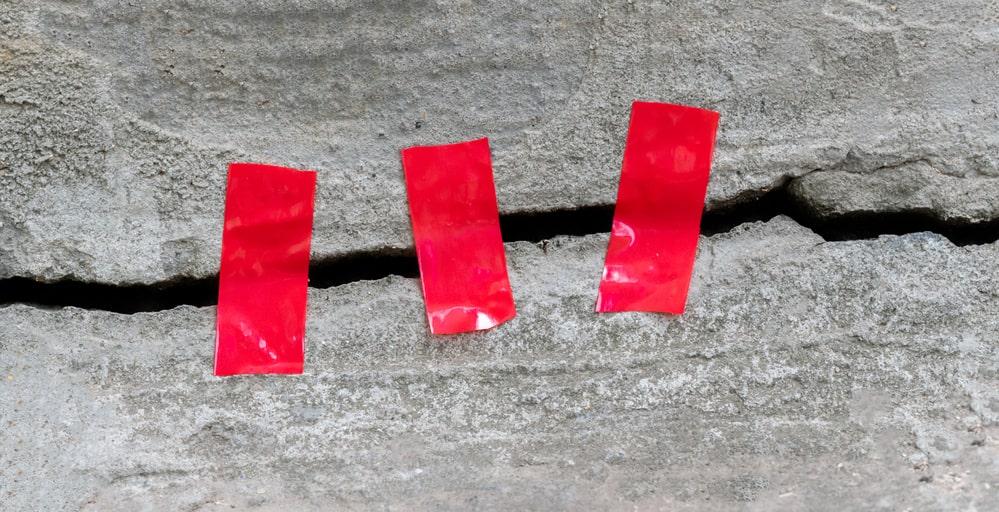Earthquakes are one of the most common natural disasters that affect the United States. In fact, even though they may not be noticeable, the USGS records some type of seismic activity almost every single day. And while these smaller ones may not pose much of a threat, larger earthquakes can prove to be a significant risk to both property and human life.

If you live in an area that’s prone to earthquakes, such as Los Angeles, you need to ensure your home is prepared for the worst. By having an earthquake valve installed on your gas line by a team of professionals, you can protect your home in the event of seismic activity. An earthquake valve does this by shutting off the flow of gas into your space, which can prevent an explosion and other damage. In addition to an earthquake shut off valve, there are many other ways that you can protect your home from an earthquake. Keep reading to learn some simple and practical tips to keep your property—and those you care about—safe in the event of an earthquake.
What Causes Earthquakes?
Let’s start at the beginning: what causes earthquakes in the first place? Earthquakes stem from faults in the Earth’s crust—far, far below our homes and buildings. Generally, faults in the crust of the Earth don’t move for long periods of time. But occasionally, the rock on either side of a fault line will slowly deform over time. This movement is caused by tectonic forces.

Earthquakes, then, are caused when some of this underground rock suddenly breaks apart, causing rapid motion along the fault line. The sudden and quick release of energy then causes seismic waves to emit that cause the ground beneath your feet to shake. As the earthquake is occurring, the tectonic plates begin moving and continue this movement until they essentially get “stuck” again. The place where the rock first breaks beneath the ground is called the hypocenter of the earthquake. The spot at the ground surface above this hypocenter is called the epicenter of the earthquake. Ranging from ones that you can barely notice to serious devastation, earthquakes can cause significant damage and loss of life.
What are the Risks of an Earthquake?
When an earthquake strikes, especially in a heavily populated urban area, chaos can quickly ensue. Depending on the magnitude of the earthquake, practically any building, object, or person in the affected area may feel the effects. In recorded history, there are many examples where earthquakes shook entire cities to their cores.
Some of the most significant risks during an earthquake include:
- Flooding.
- Structural damage.
- Building collapse.
- Fires.
- Explosions (often caused by gas lines).
- Ground displacement.
How to Protect Your Home from an Earthquake

If you live in an area that is prone to earthquakes, ensuring that your home is prepared for an earthquake is absolutely critical. But luckily, there are many steps you can take to help protect your home in the event of seismic activity. By preparing your home for the inevitable, you can better protect your property, assets, and of course, those you love.
Follow these tips to better prepare your property for an earthquake:
- Wall art and mirrors: for any heavy mirrors or pieces of art on your walls, ensure that they are securely anchored to the wall. Use wire through eye screws into the studs on your walls for the best, most secure hold. Additionally, try not to place heavy objects over your bed as they could pose a hazard while you’re sleeping. Also, avoid setting up your bed directly beneath a window.
- Secure your kitchen: keep the heart of your home safe. Use latches on your cabinets to keep them closed (and all the items inside secure) during an earthquake. Additionally, you should make sure that all your gas-powered kitchen appliances have flexible connections that can be bought at most retail stores. Strap your oven, refrigerator, and any other large appliance to the wall to prevent movement in an earthquake.
- Tree limbs: it’s important to secure the exterior of your home just as much as the interior. If you have large trees outside, especially if they’re close to your home, make sure to keep up with regular maintenance and prune off some of the heavier limbs that could snap off in an earthquake and damage your home. This is also smart maintenance in case a heavy storm comes through.
- Secure heavy furniture and bookshelves: if you have large pieces of furniture, like a bookshelf, against your walls, make sure to also anchor these. One of the largest risks to personal safety during an earthquake is large items in your home moving, shifting, and potentially colliding with you.
Conclusion – How to Protect Your Home from an Earthquake
There are few experiences as terrifying—or dangerous—as being in an earthquake. Not only can these seismic events cause damage to your home and property, but they can also pose a serious risk to your health and safety. Earthquakes can cause significant structural damage that can cause a building collapse or explosion that can prove extremely dangerous. If you live in an area that gets earthquakes, you need to be aware and do everything you can to prepare your home and property for the next big one. Contact safegasservices.com to help you get prepared for an earthquake.
Luckily, there are many easy ways you can better prepare your home for an earthquake. Secure large appliances to the walls and have latches ready for cabinets and drawers. Also, make sure you securely anchor heavy mirrors or pieces of wall art and avoid placing any of these items directly above your bed. Brace your water heater, secure your small and valuable items, and even prune some of those tree limbs in your yard. By taking these steps, you can better prepare your home and family for an earthquake.
Images by Depositphotos





